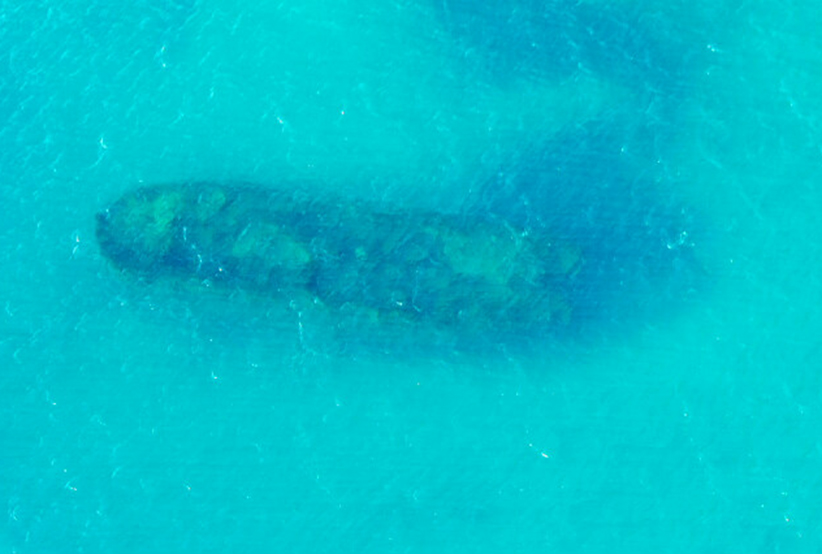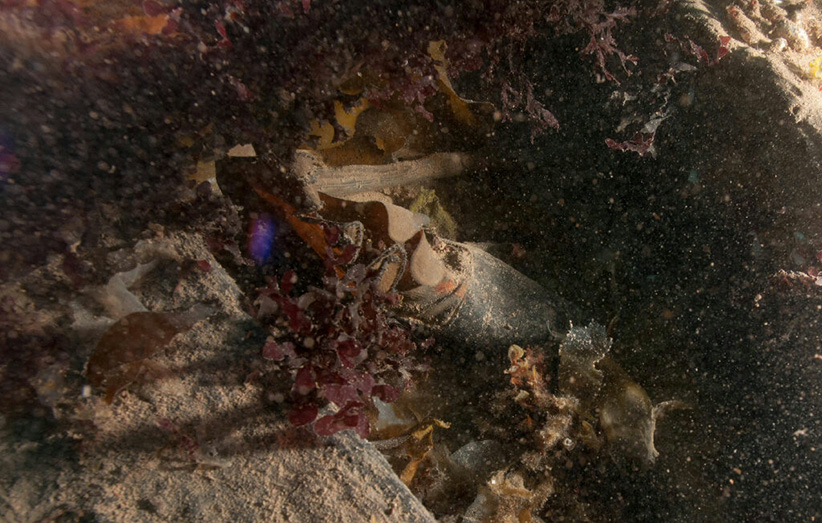Unlocking the key to the Franklin mystery
As divers work their way down the wreck of HMS Erebus, they’ve found part of the ship’s wheel and a sword hilt among dozens of artifacts
Share

After collectively spending more than 100 hours in the water this summer, dive teams exploring the wreck of HMS Erebus in Canada’s High Arctic have hatched a plan to explore the gloomy, partially collapsed interior of the nearly 170-year-old shipwreck.
Marc-André Bernier, the head of Parks Canada’s underwater archaeology unit, says the team took advantage of several weeks of unusually good weather to map out the site, cut away seaweed and determine the best way to enter the ship, which was first discovered last year in the eastern Queen Maud Gulf. They plan to return next season to begin the laborious process of working their way down to the lower decks. “That’s where everyone believes the key to the Franklin mystery lies—mainly inside the officers’ cabins,” Bernier says.
It won’t be easy.
While the bow of the ship is almost intact—Bernier says it will be a “swim in”—other sections have been badly damaged by ice and will need to be reinforced before divers can venture inside. Bernier says the archaeological exploration of the ship could take as long as five years to complete, but is hopeful it will shed new light on the Arctic’s greatest maritime mystery.
Erebus, along with its Royal Navy sister ship, HMS Terror, went missing in what is now the Canadian Arctic in the middle of the 19th century. Both vessels were under the command of accomplished explorer Sir John Franklin, who set out from England in 1845 to chart a course through part of the fabled Northwest Passage and conduct magnetic experiments. Neither Franklin nor any of his 128 men survived. Subsequent searches for the lost expedition, conducted over more than a century, turned up evidence of a horrific tale. Both ships became trapped in ice off the northwest coast of King William Island for two winters. Franklin and several of his sailors died by 1847, leaving the remaining crew members to undertake a desperate march south toward the Canadian mainland. Some are believed to have resorted to cannibalism before they ultimately perished.
A severe storm during the last leg of last summer’s operations offered a reminder of the Arctic’s difficult climate. It kicked up sediments around the Erebus wreck, which sits upright in about 11 m of water, and reduced visibility to less than a metre, Bernier says. The waves even moved timbers on the deck. Among the 39 artifacts that were brought back include a section of the ship’s wheel, a patterned dinner plate and the hilt of a sword. The finds are to be shipped to Parks Canada’s conservation labs in Ottawa, where they will be kept wet and refrigerated.
Search teams also took advantage of mostly favourable conditions to look for evidence of Terror in the normally ice-choked Victoria Strait, surveying some 500 sq. km in the process.
Bernier says the experience of swimming around the wreck of Erebus could be haunting, at times. “I was cleaning off the kelp and found the sword handle, which was neat and exciting,” he recalls. “A few minutes later, I stumbled on a [sailor’s] boot and it was a completely different reaction.” He made a similar connection to the doomed crew when he came face-to-face with the entrance to an officer’s cabin. “That makes you pause,” he says. “What you have in front of you was somebody’s world.”

